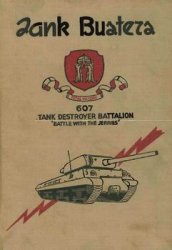1 Provenience. The Gosudarev Log I site is described above. Our sample of 14 pieces is only 0.2% of our 8813-piece total (Table A1.1, site 7).
2 Species. Of the 14 Gosudarev Log I pieces, 92.9% are big mammal, and 7.1% are horse (Table A1.2, site 7). Given the identifications made by Ovodov at an earlier time, some of the unknown pieces probably belong to one or another of the non-horse species.
3 Skeletal elements. Scapula (21.4%), pelvis (21.4%), mandible (14.3%), vertebra (14.3%), femur (7.1%), long bone (7.1%), foot (7.1%), and unknown (7.1%) make up the elements in the 14-piece Gosudarev Log I assemblage (Table A1.3, site 7). Given the small sample size, there is no value to making comparisons with the pooled assemblage.
4 Age. There are no discernible sub-adult pieces in the Gosudarev Log I assemblage (Table A1.4, site 7). Of the 14 pieces, 92.9% are positively identified as adult.
5 Completeness. The relatively high amount of skeletal element identification is made possible by the degree of completeness. Whole bones (7.1%) and bones with one anatomical end (42.9%) constitute half of the 14-piece Gosudarev Log I collection (Table A1.5, site 7).
6 Maximum size. Gosudarev Log I contains some relatively large pieces. These range in size from4.7 cm to 30.0cm, with a mean of 11.7 cm (Table A1.6, site 7). Completeness and size go hand in hand here. Compared with the pooled assemblage values, in the same order, 9.0cm, 3.2cm to 31.0cm, suggests a certain similarity. Comparing the whole long-bone lengths of horse published by Vera Gromova (1950: table 27), shows that the upper range limit for Gosudarev Log I is somewhat smaller than her values.
7 Damage shape. Pieces of long-bone fragments (35.7%), mandibular symphysis (14.3%), vertebral spine (14.3%), pelvis center (14.3%), undamaged (7.1%), irregular (7.1%), and mostly whole (7.1%) make up the Gosudarev Log I damage inventory (Table A1.7, site 7). As above, maximum size and completeness relate to damage-form identification.
8 Color. There is one brown (7.1%), and 13 ivory colored pieces in the Gosudarev Log I collection (Table A1.8, site 7). The brown piece was almost certainly burned, although it is remotely possible that it was stained by the overlying sandy soil that was reddish in color.
9 Preservation. Like other open sites where preservation is generally poor, Gosudarev Log I has mostly chalky pieces (85.7%; 12/14) (Table A1.9, site 7).
10 Perimortem breakage. Out of the 14 Gosudarev Log I pieces, there is a relatively low occurrence (28.6%) of perimortem breakage (Table A1.10, site 7).
11 Postmortem breakage. This condition is common (85.7%) in the 14-piece Gosudarev Log I collection (Table A1.11, site 7). It correlates strongly with preservation quality.
12 End-hollowing. Some carnivore activity is represented by the Gosudarev Log I frequency of 15.4% (2/13 pieces) end-hollowing (Table A1.12, site 7).
13 Notching. Further evidence of carnivore activity comes fTom one Gosudarev Log I notched piece (1 /14; 7.1%). It has one notch (Table A1.13, site 7).
Gosudarev Log I
103
14-17 Tooth scratches, tooth dints, pseudo-cuts, and abrasions. None ofthe 14 Gosudarev Log I pieces exhibits these perimortem damage features (Tables A1.14, site 7 to A1.17, site 7).
18 Polishing. Only end-polishing is present in the Gosudarev Log I collection (28.6%; 4/14) (Table A1.18, site 7).
19 Embedded fragments. None of the 14 Gosudarev Log I pieces has embedded fragments (Table A1.19, site 7).
20 Tooth wear. There are no Gosudarev Log I teeth from which to assess wear.
21-23 Acid erosion, rodent gnawing, insect damage. None of the 14 Gosudarev Log I pieces show these features (Tables A1.21, site 7 to A1.23, site 7).
24 Human bone. No human bone was found at Gosudarev Log I.
25 Cut marks. In our judgment there are no prehistoric cut marks on any of the 14 Gosudarev Log I pieces (Table A1.25, site 7). However, there are three pieces with cut marks that are very clean and postmortem in appearance. We believe these were caused by excavation procedures.
26 Chop marks. Two ofthe 14 Gosudarev Log I pieces have chop marks (14.3%). One piece has one chop mark; the other has three chop marks (Table A1.26, site 7).




 World History
World History









